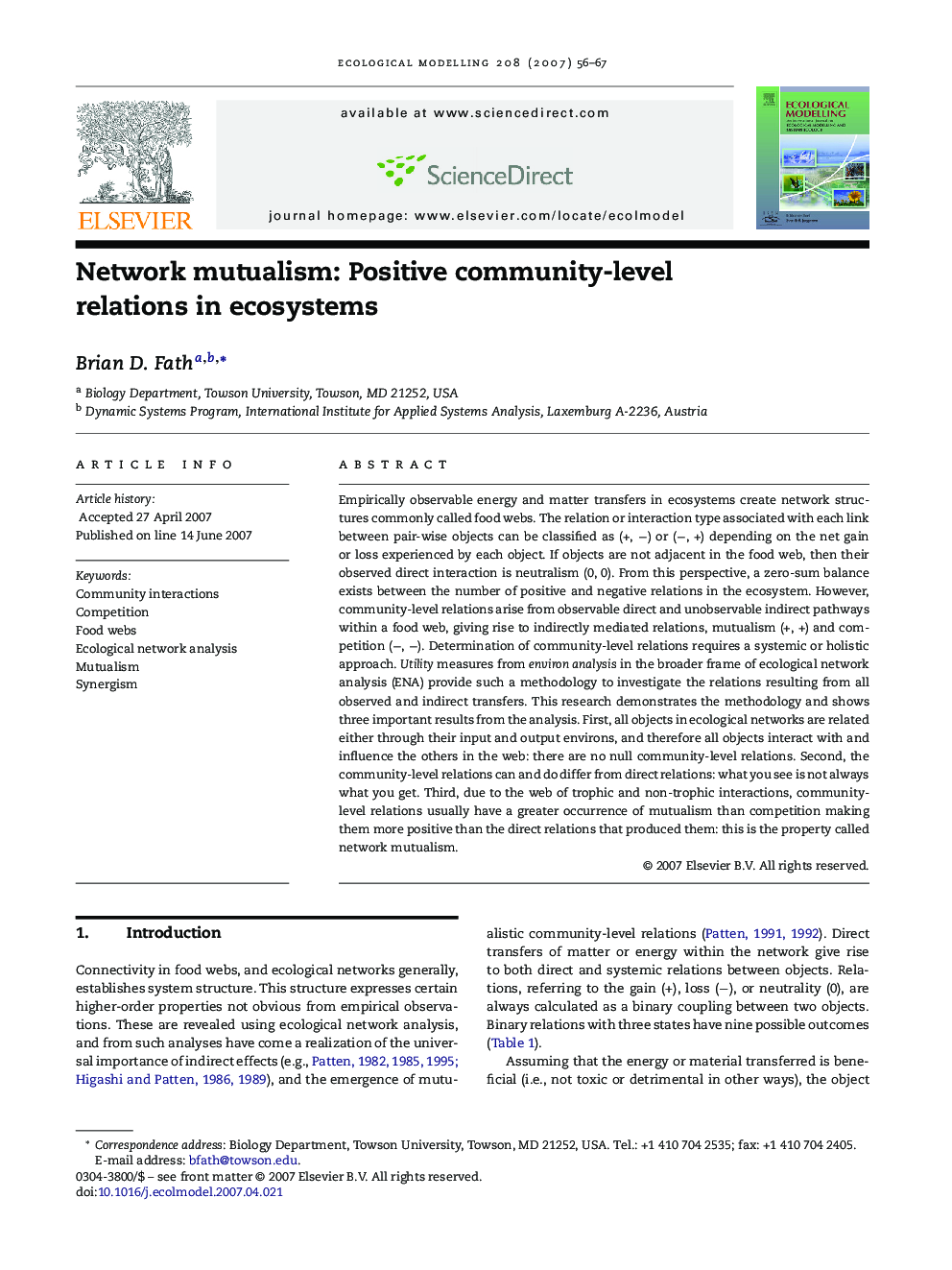| Article ID | Journal | Published Year | Pages | File Type |
|---|---|---|---|---|
| 4378632 | Ecological Modelling | 2007 | 12 Pages |
Abstract
Empirically observable energy and matter transfers in ecosystems create network structures commonly called food webs. The relation or interaction type associated with each link between pair-wise objects can be classified as (+, â) or (â, +) depending on the net gain or loss experienced by each object. If objects are not adjacent in the food web, then their observed direct interaction is neutralism (0, 0). From this perspective, a zero-sum balance exists between the number of positive and negative relations in the ecosystem. However, community-level relations arise from observable direct and unobservable indirect pathways within a food web, giving rise to indirectly mediated relations, mutualism (+, +) and competition (â, â). Determination of community-level relations requires a systemic or holistic approach. Utility measures from environ analysis in the broader frame of ecological network analysis (ENA) provide such a methodology to investigate the relations resulting from all observed and indirect transfers. This research demonstrates the methodology and shows three important results from the analysis. First, all objects in ecological networks are related either through their input and output environs, and therefore all objects interact with and influence the others in the web: there are no null community-level relations. Second, the community-level relations can and do differ from direct relations: what you see is not always what you get. Third, due to the web of trophic and non-trophic interactions, community-level relations usually have a greater occurrence of mutualism than competition making them more positive than the direct relations that produced them: this is the property called network mutualism.
Related Topics
Life Sciences
Agricultural and Biological Sciences
Ecology, Evolution, Behavior and Systematics
Authors
Brian D. Fath,
